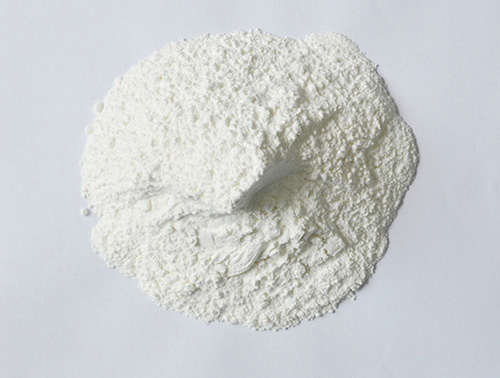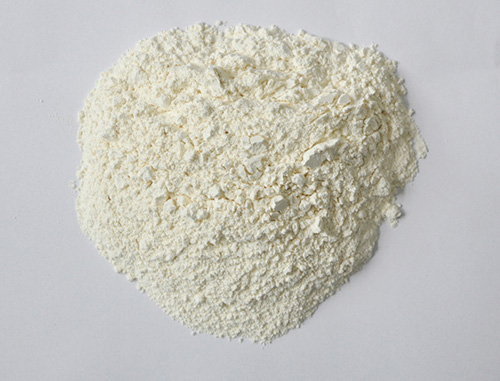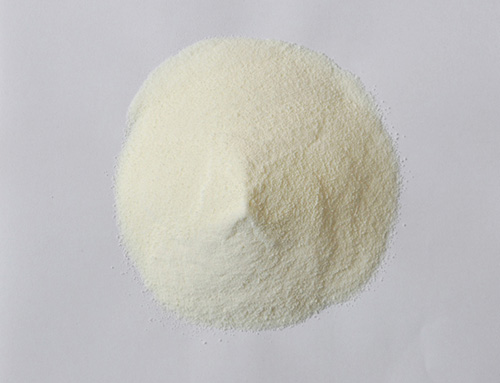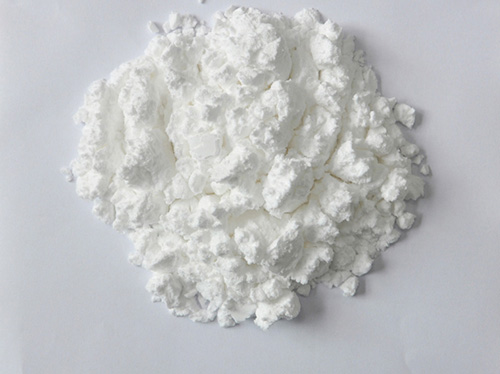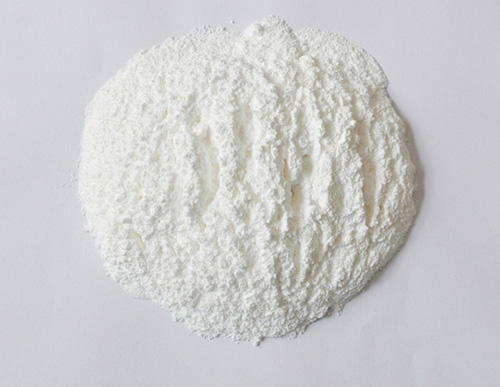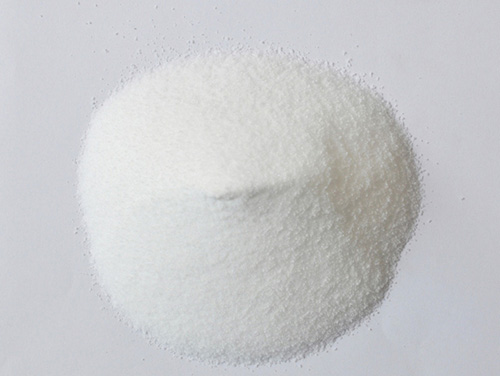This product is sulfated chain mucopolysaccharide sodium salt extracted from the cartilage of healthy animals. Its terrestrial source is porcine, bovine, sheep, chicken, duck and other poultry; The marine sources are mainly sharks, salmon, etc. Chondroitin sulfate in cartilage combines with protein and exists in the form of proteoglycan. Chondroitin sulfate sodium is mainly composed of sodium sulfate salt of the copolymer of N-acetylgalactosamine (2-acetamide-2-deoxy-D-galactopyranose) and D-glucuronic acid, and hexose in the copolymer is alternately connected by P-1,3 and P-1,4 glycosidic bonds. The molecular formula of chondroitin sulfate sodium is H(C14H19NNa2O14S)xOH, the molecular weight is 5000 to 50000 dalton , and the assay of chondroitin sulfate sodium is 90.0%~105.0% on dry base.
-
Chondroitin sulfate sodium
-
Shark cartilage powder
Shark cartilage powder is a white to almost white amorphous powder made of shark cartilage parts such as skull, fin and spine bone after physical treatment such as impurity removal, cleaning, sterilization and crushing.
It has a light characteristic fishy smell, among which the quality of fin cartilages is the best. It can promote the regeneration of human cartilage, inhibit angiogenesis, and enhance the body's resistance.
-
Collagen
Collagen is composed of three polypeptide chains to form a triple helix structure, that is, each of the three polypeptide chains rotates left-handed to form a left-handed helix structure, and then occludes each other with hydrogen bonds to form a firm right-handed super helix structure (unique to collagen).
Three peptide chains of type I collagen, including two α(I) Chain, 1 piece α (II) Chain. There are only minor differences in the amino acid sequences between the α(Ⅰ) and α(Ⅱ) chains.
Type I collagen is mainly distributed in fish skin, fish scale, porcine, bovine skin, bone and other tissues. One of the most significant characteristics of type I collagen in fish collagen is its low thermal stability and obvious absorption effect.
Collagen type Ⅱ is composed of three identical α chains, namely [α I (Ⅱ)]3, which is rich in hydroxylysine and is the main collagen in cartilage. Collagen type II is produced by chondrocytes.
Collagen and collagen polypeptides are different. Collagen molecules are mainly hydrolyzed to form collagen polypeptides with small relative molecular weight. Due to the unique triple helix structure of collagen, its properties are very stable, and the general processing temperature and short time heating cannot decompose it, which makes it difficult to digest and absorb, and is not easy to be fully utilized by the human body.
The hydrolyzed collagen polypeptide has high absorption and utilization rate, which can promote the absorption of other proteins in food. Collagen polypeptides are extremely soluble in water, acid and alkali resistant, high temperature resistant, strong water absorption, etc. They are widely used in the field of food and cosmetics.
The triple helix structure of collagen

-
Glucosamine
Glucosamine is extracted from crab and shrimp shells and is the monomer of glucosamine derivative N-acetyl-D-glucosamine chitin. Glucosamine is the precursor of mucopolysaccharide, and mucopolysaccharide is the main component of articular cartilage, one of the important nutrients to form chondrocytes, and also the basic component of cartilage matrix and joint fluid. Therefore, glucosamine is widely used in the prevention and treatment of bone and joint diseases.
The industrial extracted glucosamine is divided into D-Glucosamine hydrochloride、D-Glucosamine sulfate potassium chloride、D-Glucosamine sulfate sodium chloride、N-acetyl-D-glucosamine.
-
Sodium hyaluronate
Sodium hyaluronate, also known as sodium hyaluronate is a kind of natural mucopolysaccharide, which is widely used in medical beauty, bone and joint health care and beauty fields.
The molecular formula is (C14H20NO11Na)n, which is a kind of high molecular polymer composed of disaccharide repeats of D-glucuronic acid and N-acetyl-glucosamine, with a molecular weight of 500,000 to 2 million. The quality is divided into food grade, cosmetic grade and pharmaceutical grade.
It is white amorphous powder, odorless and tasteless, hygroscopic, soluble in water, insoluble in organic solvents.
-
Methyl-Sucfonyl-Methane
Methyl-Sucfonyl-Methane (MSM) is an organic sulfide with the molecular formula of CH3SO2CH3, which is necessary for human collagen synthesis. Methyl-Sucfonyl-Methane is contained in human skin, hair, nails, bones, muscles and various organs. The human body consumes 0.5mg MSM every day. Once lacking, it will cause health disorders or diseases. Therefore, as a dietary supplement, it is widely used abroad.It also maintains the balance of biological sulfur in human body.


